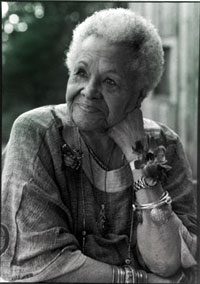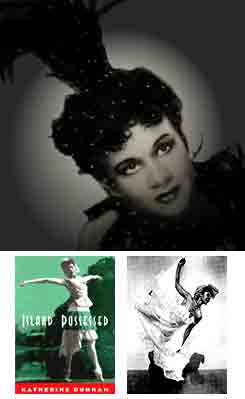I used to want the words “She tried.” on my tombstone. Now I want “She did it.”
If you dance, you dance because you have to. Every dancer hurts, you know.
Go within every day and find the inner strength so that the world will not blow your candle out.

The best career advice given to the young is: “Find out what you like doing best and get someone to pay you for doing it.”
I always believed that if you set out to be successful, then you already were.
I wasn’t concerned about the hardships, because I always felt I was doing what I had to do, what I wanted to do and what I was destined to do.
We weren’t pushing Black is beautiful. We just showed it.
–Katherine Dunham
Beyond the sensual sway of hips and the flexible tilt of torsos unique to the Katherine Dunham Technique, her legacy will be remembered for more than the rhythmic movement of the body that mesmerized.
Alvin Ailey once remarked that before Katherine Dunham, the only Black dance was tap. She infused ethnography with entertainment, political activity with artistic sensitivities. She studied cultural rituals throughout Africa and the Diaspora and threaded them into the rich fabric of dance. Her scholarship in the anthropology and culture of Black people in America, the Caribbean and Latin America generated a base for her movement on and off the stage.

The year I decided to become a dancer was the year that I sat rapt as a young girl watching a performance from the Alvin Ailey Dance Theater company when it opened its 1987 season in New York as “The Magic of Katherine Dunham.” But there were no tricks to her technique. As a young student of dance, my teachers formed my world of movement through a lens of love for Ms. Dunham, as a living legend among us.
The Katherine Dunham School of Cultural Arts in Manhattan has given birth to generations of artists, such as choreographers Arthur Mitchell and Peter Gennaro, ballerina Nora Kaye, and actors James Dean, Marlon Brando and Chita Rivera. Alvin Ailey, Ron Brown and Bill T. Jones are several choreographers influenced by her groundbreaking work.
Beginning in the early thirties, when she formed the first Black dance troupe, she choreographed, directed and performed, leaving upon her passing away at the age of 96 on May 21 an expansive artistic archives that includes over 90 choreographed works for stage, nine Hollywood films and several foreign films, eight books including an autobiography, numerous articles and short stories.
Upon graduation from college in 1936 earning a BA in Anthropology, she traveled with a Rosenfeld Fellowship, spending nine months in Haiti, Trinidad, Jamaica, Cuba and Martinique, filming indigenous dances. Self-financing her dance company, she toured on stages in the U.S. and abroad in Europe, Mexico and Latin America for over five decades that brought global acclaim to her presence, which she parlayed into activism.
She refused to perform in any segregated venues and once sued a hotel in Sao Paulo, Brazil for discrimination, which eventually led the president of Brazil to not only apologize to her, but also pass a law against discrimination in public places.
She served as a cultural adviser to the president of Senegal in 1965-1966, and attended Senegal’s First World Festival of Negro Arts as a representative from the United States. The United Nations Educational, Scientific and Cultural Organization; and the governments of Brazil, Haiti and France have all honored her.
After the military overthrow of Haiti’s democratically elected President Jean-Bertrand Aristide in 1992, Ms. Dunham (then 82 years old) began a 47-day fast to protest the U.S. deportations of Haitian refugees that sailed to these shores, fleeing the violence that drowned the island country in blood.
“You cannot take in 2,000 Cubans and send away 170 Haitians. You have to give a reason for this,” she remarked, “and that is rather startling when you realize that we do not have diplomatic relationships with Cuba.” Determined, it took a personal visit from Mr. Aristide himself to convince her to end her act of civil disobedience.
Her commitment also extended to the community, such as her establishment of the Performing Arts Training Center to combat the deprived landscape of the slums of East St. Louis–a cultural program and school for neighborhood children, youth and later seniors, with programs in dance, drama, martial arts and humanities.
“Anyone who seriously works in Dunham Technique,” Ms. Dunham said in a 1988 interview, “comes out not only a good professional dancer, but also a humanist.”












